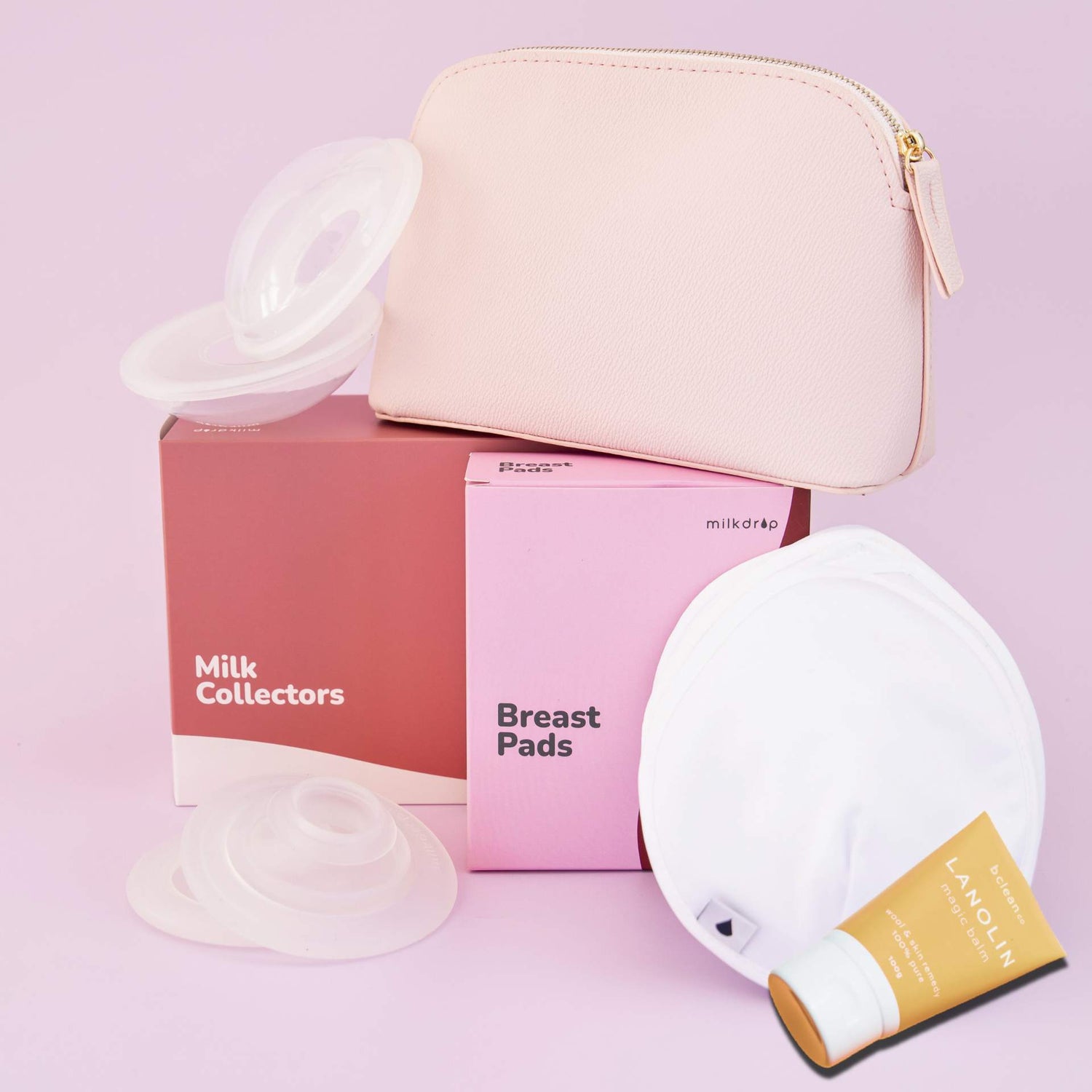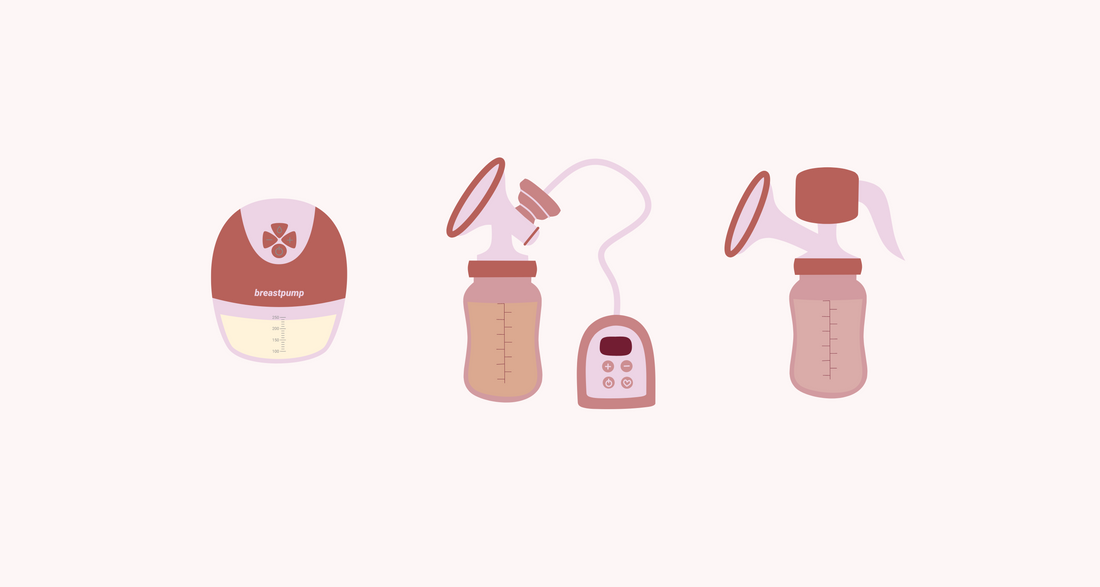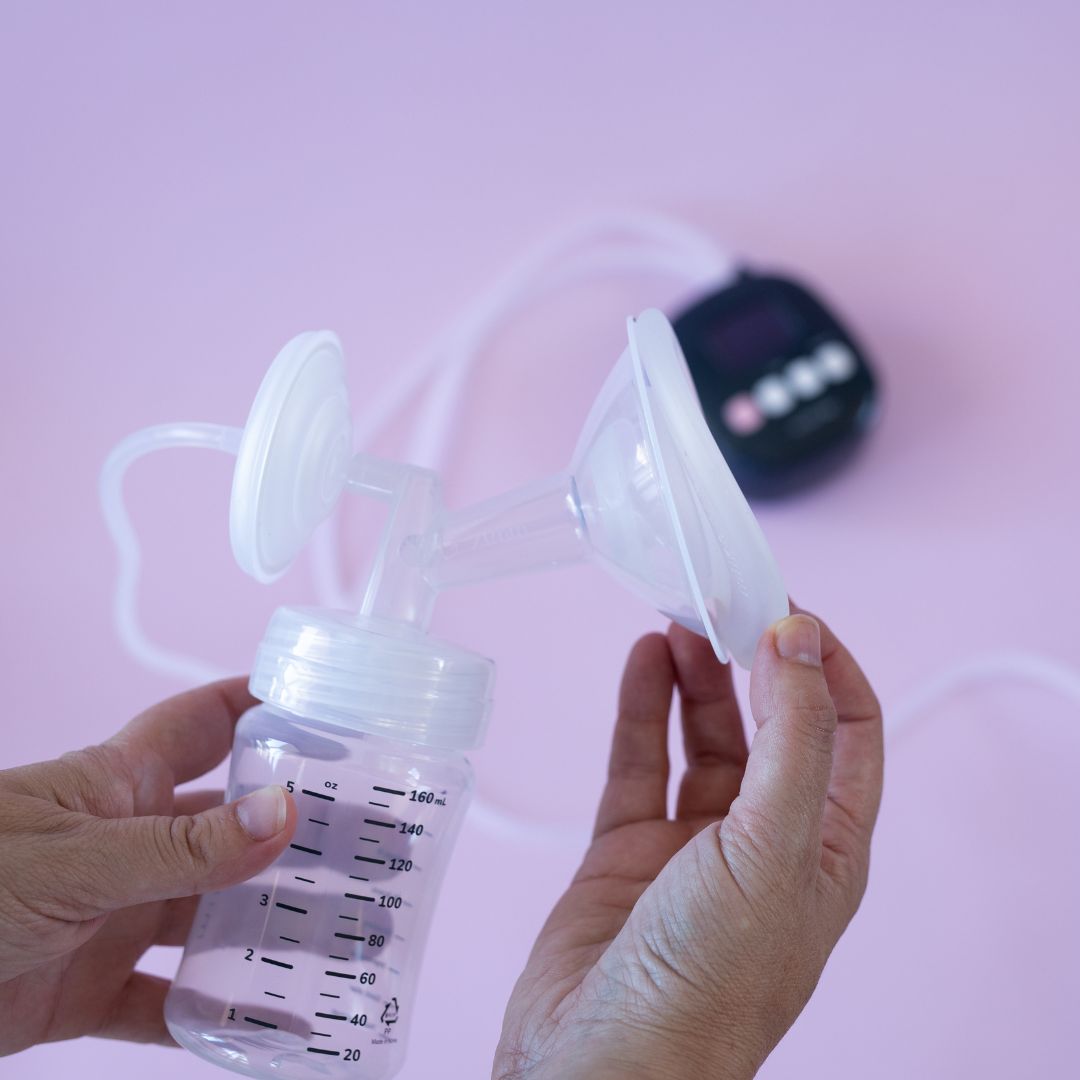Choosing the right breast pump can feel overwhelming. It’s like standing in front of an ice cream shop trying to choose a flavour... only without the delicious frozen treat and with a significantly higher price tag.
There are so many designs and options, so we are here to help you navigate them. From different types and nifty features to pricing and ease of use, we've got your back (or rather, your boobs) covered!
Here’s a few questions to think about.
These are a few questions to think about before you go looking at pumps. Understanding your needs will allow you to find the best pump for you.
Q1: Which types of breast pumps are portable?
If you're looking for a portable option, both manual pumps and electric wearable pumps are great choices. Manual pumps are lightweight and compact, making them easy to toss into your bag when you're on the go. Electric wearable pumps are designed to be discreet and hands-free, allowing you to pump anywhere without being tied down to a power outlet.
Q2: Should I get a single or double pump?
The choice between a single or double pump depends on your needs and pumping preferences. A single pump is suitable if you plan to pump when you are occasionally away from your baby. On the other hand, a double pump allows you to express milk from both breasts simultaneously, saving precious time. Double pumping is especially beneficial for mums who need to pump frequently or have a lower milk supply. Likely worth the investment if you are pumping regularly.
Q3: What's the difference between a manual and electric pump?
The main difference between a manual pump and an electric pump is the method of operation. An electric pump uses a motorised mechanism to create suction, making it easier and more efficient. Electric pumps often have adjustable settings for suction strength and speed, offering a more customizable experience. Manual pumps are designed to complement mums who usually breastfeed, but may pump on occasion. You are required to manually hand pump to create suction and express milk; which is more labour and time intensive to extract milk. However, if it’s for the occasional night or weekend away it probably isn’t too much of a burden.
Q4. Should I buy a breast pump before giving birth?
Unless you know you are heading back to work early and want to pump, or plan to exclusively pump from the start, your pumping needs usually aren’t known until you give birth. If you are one of the above, buying a pump when you are pregnant may be the way to go. If you are planning to breastfeed, you can probably wait till after you meet your baby. This will allow you to better understand your lifestyle, baby, milk production and ultimately pump needs.
Which one is for me?
Most pumps fall into about five categories depending on your perspective. Everybody responds to pumps differently, so it’s important to try different ones if you can access them, depending on what you’re trying to achieve.

👆🏾Here are five broad types of pumps. Each has a different purpose, and what might suit your friend or sister, may not suit you, depending on why you’re pumping. We’ll explain each type a bit more below with pros and cons below
Types of Breast Pumps
Electric Pump with Traditional Flange

Who the Pump is For: Busy mums who plan to pump regularly and need a reliable and efficient option. Those who are exclusively pumping or pumping to increase supply.
This pump is the usual one you see around in stores and online. It consists of a motor unit that powers the pump, breast shields that suction onto the breasts, and tubing that connects the breast shields to the motor unit.
Cost: $$ -$$$
Features:
- Provides efficient pumping with adjustable suction levels.
- Offers various speed and suction settings for customization
- Compatible with most standard breast pump accessories.
- Milkdrop original cushions are compatible with most traditional electric pumps
- Some requires an electrical outlet, limiting portability
- Bulky and inconvenient to use - you need to sit down or use a pumping bra
- Can be noisy during operation.
Electric Pump with Collection Cups

Who the Pump is For: Some as above, mums who are pumping regularly and need to maintain a strong supply, but would like a bit more portability.
These collection cups are a clever way of transforming your electric pump with traditional flanges into something that you can pop in your bra and move around with. They’re connected to your pump with clear tubing just like the other flanges.
Cost: $ (if you already have an electric pump). $$-$$$ with pump
Features:
- Collection cups fit directly in your bra, providing discreet and hands-free pumping.
- Allows for multitasking while pumping.
- Same benefits of an electric pump with traditional flanges - adjustable suction levels and speed settings.
- Affordable (if you already own a traditional electric pump). You can use these to upgrade from your traditional flanges without having to buy a whole new pump.
- Milkdrop wearable cushions (coming soon!) are compatible with most wearable devices
- Collection cups may have limited capacity, requiring frequent emptying.
- Still has tubing - it’s not totally wireless.
- Basic design. The flange and tunnel can be uncomfortable. They may be made from silicone, but it’s still quite hard, and the tunnel is typically quite wide and short. If you have elastic nipples or you are having pain, these might not work well for you without modification.
Electric Wearable Pump

Cost: $$-$$$
Who the Pump is For: On-the-go mums who need the flexibility to pump anytime, anywhere, without being tethered to a power outlet. Mums who are heading back to work and want to supplement a few feeds a day.
This pump has the motor and milk collection all in one spot, and worn discreetly under clothing, allowing a person to pump milk hands-free while going about their daily activities. The motor (the bit that powers the suction) can be attached to the cup of the pump in the bra or integrated into the pump itself.
Who the Pump isn’t For: People who are exclusively pumping or trying to increase supply
Features:
- Wearable design allows for hands-free pumping and discreet use.
- Can be worn under clothing
- Lightweight and portable, making it ideal for traveling or busy mums.
- Some models offer quiet operation for pumping in public or while the baby sleeps.
- Compatible with most standard breast pump accessories.
- Can be adjusted for different suction levels and pumping modes.
- May not be as powerful as traditional electric pumps.
- Milkdrop wearable cushions (coming soon!) are compatible with most wearable devices
- Limited storage capacity compared to other pump types.
- May be more difficult to clean and maintain than other types of pumps (lots of parts)
- Can be expensive, and unfortunately the cheap versions are often unregulated and quality of materials and electronics not assured
- Not suitable for mums who prefer a more powerful or customizable pumping experience.
Manual Pump

Who the Pump is For: Mums on a budget or those who prefer a simple, manual pumping experience.
This type of pump is powered by hand and does not require electricity. You place your breast in the shield and squeeze the handle to create suction.
Cost: $-$$
Features:
- Affordable and cost-effective option.
- Lightweight and portable, ideal for occasional use or travel.
- Allows for complete control over suction and pumping speed.
- Quiet operation for discreet pumping.
- Easy to clean and assemble, with fewer parts compared to electric pumps.
- Milkdrops traditional cushions are compatible with most of these
- May be less effective at expressing milk than other types of pumps. Most people need more suction, but some people actually find the gentleness of these pumps is more effective for expressing milk.
- Requires manual effort and hand pumping, which can be tiring for some.
- Not ideal for frequent or long pumping sessions.
- May not be suitable for mums with low milk supply.
Manual Milk Collector

Who the Pump is For: Breastfeeding mums who want to collect excess milk or save every precious drop without the need for active pumping.
These ‘pumps’ are more for catching extra drips than a powerful pump - it is essentially a silicone shell that you can place on your breast and hold it there by squeezing a bulb. They come in different shapes but are essentially the same thing - you can suction them on to your breast by squeezing the bulb or the cup. It can then collect milk you might express through letdown or drips between feeds or pumps or if your feeding or pumping on the other breast.
Cost: $
Features:
- Offers a hands-free and passive milk collection method.
- Easy to use and requires no pumping action.
- Cheap, lightweight
- Efficient if you have lots of milk or leaking milk
- Many people don’t respond to these shells at all, and aren’t able to collect any milk with them.
- Not suitable as an exclusive pump for mums with low milk supply or those who need to pump regularly.
Click here to explore our blog post on essential pumping accessories for a comprehensive guide to enhancing your pumping experience.
There you have it—the ultimate guide to choosing the breast pump. Remember, everyone is unique, so what works for one might not work for another. Do your research, read reviews, and chat with other mums or healthcare professionals for some insider tips.



